Date 23 August 1896 | ||
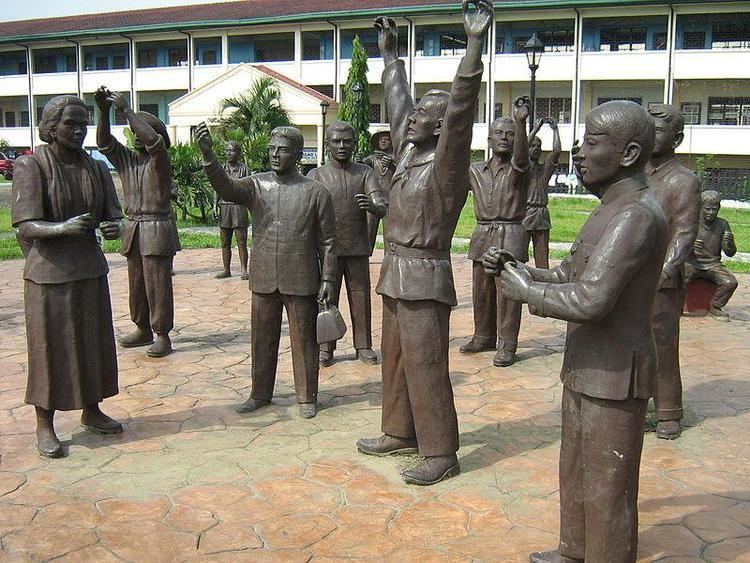 | ||
Combatants Philippines, Katipunan, Spanish Empire Similar Battle of Manila (1896), Battle of San Juan del Monte, Battle of Pasong Tamo | ||
Cry of Pugad Lawin | Today in History
The Cry of Pugad Lawin (Filipino: Sigaw ng Pugad Lawin), alternately and originally referred to as the Cry of Balintawak (Filipino: Sigaw ng Balíntawak, Spanish: Grito de Balíntawak), was the beginning of the Philippine Revolution against the Spanish Empire.
Contents
- Cry of Pugad Lawin Today in History
- Sigaw ng pugad lawin cry of pugad lawin 2014
- Events Leading Up To The Cry Of Pugad Lawin
- The Katipunan Rebellion
- Different dates and places
- Definition of the Cry
- First skirmish
- Tearing of cdulas
- Formation of an insurgent government
- Other Cries
- Commemoration
- Historical Debate On The Cry
- References

At the close of August 1896, members of the Katipunan secret society (Katipuneros) led by Andrés Bonifacio rose up in revolt somewhere in an area referred to as Kalookan, wider than the jurisdiction of present-day Caloocan City which may have overlapped into present-day Quezon City.
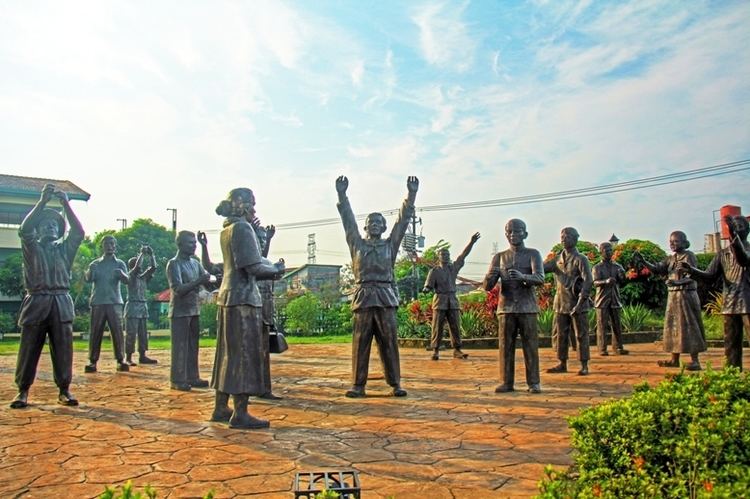
Originally the term "Cry" referred to the first clash between the Katipuneros and the Civil Guards (Guardia Civil). The cry could also refer to the tearing up of community tax certificates (cédulas personales) in defiance of their allegiance to Spain. This was literally accompanied by patriotic shouts.
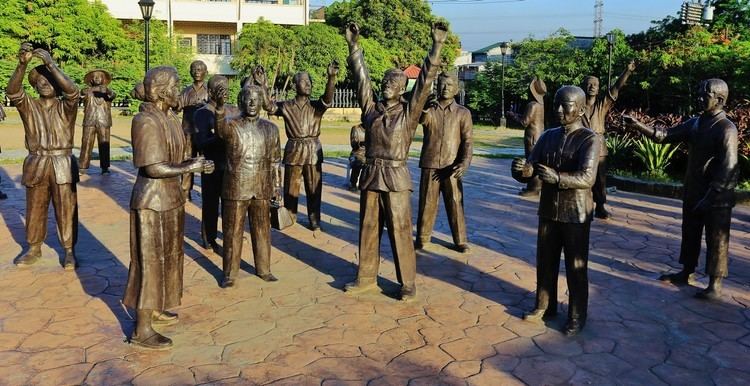
Because of competing accounts and ambiguity of the place where this event took place, the exact date and place of the Cry is in contention. From 1908 until 1963, the official stance was that the Cry occurred on August 26 in Balintawak. In 1963 the Philippine government declared a shift to August 23 in Pugad Lawin, Quezon City.
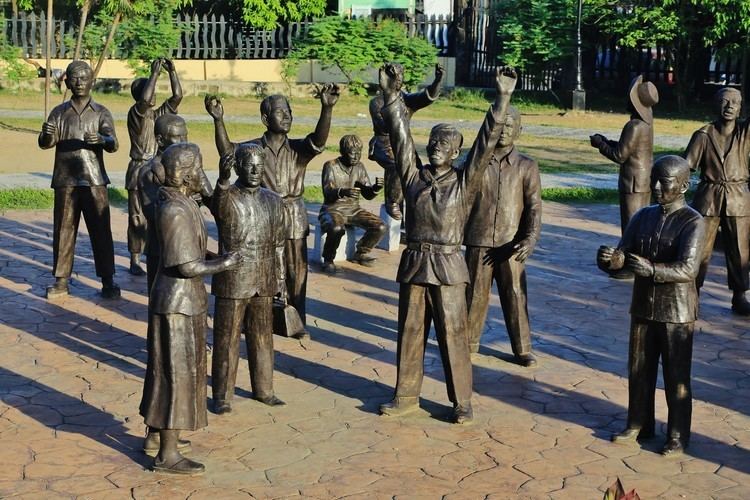
Sigaw ng pugad lawin cry of pugad lawin 2014
Events Leading Up To The Cry Of Pugad Lawin
Prior to the Cry of Pugad Lawin, a series of events occurred that strengthened the resolve of the Filipino people against the Spanish colonizers. These events brought unity to the once-divided Filipino people and led directly to the Cry of Pugad Lawin and the formation of the Philippine Revolution.
Cavite Mutiny
On the day of January 20th, 1872, approximately 200 Filipino military personnel stationed in Fort San Felipe in Cavite staged a mutiny against Governor-General Rafael de Izquierdo. The Governor-General had rescinded the liberal mandates of his predecessor Governor-General Carlos Maria de la Torre, earning him the ire of the Filipino workers.
The mutiny was quickly and violently quelled, and the Governor-General named and condemned three priests as the leaders of the mutiny.
Gomburza Martyrdom
Mariano Gomez, Jose Burgos, and Jacinto Zamora were prominent Filipino priests that were sentenced to death by public execution due to their involvement in the Cavite mutiny. On February 17, 1872, the three priests were publicly executed by garrote on the order of Governor-General Rafael de Izquierdo.
Though the Governor-General hoped to make an example of the priests to intimidate the Filipinos, the public execution had the opposite effect. The names of the three priests were made into a portmanteau, and the resulting “Gomburza” became a rallying cry for nationalistic Filipinos.
Exile Of Jose Rizal
In 1892, Jose P. Rizal, a prominent Filipino author and future national hero of the Philippines, was exiled by the Spanish government to Dapitan, in Northern Mindanao. Rizal had published two novels, Noli Me Tangere and El Filibusterismo, which were highly critical of the Spanish rule over the country.
Rizal also established La Liga Filipina, an underground organization for Filipino nationalists with the goal of uniting the Philippine archipelago against the oppressive Spaniards. Three days after forming this organization, however, he was arrested by the Spanish government and was exiled for four years.
The Katipunan Rebellion
Founded in 1892,the Kataas-taasang, Kagalang-galangang Katipunan ng mga anak bayan (KKK), colloquially known as the Katipunan, was the organization that instigated the Cry of Pugad Lawin. Headed by Andres Bonifacio, the Katipunan’s goal was to overthrow the Spanish colonizers through a revolution and gain independence as the Republic of the Philippines.
The events of the Cry of Pugad Lawin were attended by around 500 Katipuneros, led by Andres Bonifacio. On August 23rd, 1896, the Katipunan met at the house of Apolonio Samson to discuss when they would formally begin the uprising. The initial meeting was presided over by Bonifacio, with Emilio Jacinto acting as secretary, which led to a stalemate.
The Katipunan decided to hold another meeting on the next day, August 24th, with more Katipuneros amassing at the location of the meeting. After some heated debate, the Katipunan decided on August 29 as the day they would attack Manila.
After the conclusion of the meeting, Bonifacio stepped out to address the amassed Katipunan members. It was then that he rallied the revolutionaries to tear their cédulas, showing their commitment to the cause. The gathered Katipuneros then broke out into shouts of “Mabuhay ang Pilipinas! Mabuhay and Pilipinas!” (“Long live the Philippines!”)
Unfortunately, on August 25th, the day after the Cry of Pugad Lawin, the Spanish Civil Guard discovered the insurgent Katipuneros, leading to the bloody Battle of Pasong Tamo.
Different dates and places
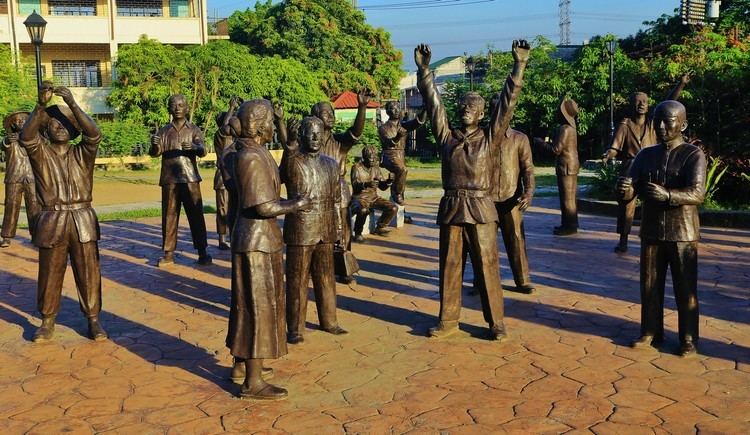
Various accounts give differing dates and places for the Cry. An officer of the Spanish guardia civil, Lt. Olegario Diaz, stated that the Cry took place in Balintawak on August 25, 1896. Historian Teodoro Kalaw in his 1925 book The Filipino Revolution wrote that the event took place during the last week of August 1896 at Kangkong, Balintawak. Santiago Alvarez, a Katipunero and son of Mariano Alvarez, the leader of the Magdiwang faction in Cavite, stated in 1927 that the Cry took place in Bahay Toro, now in Quezon City on August 24, 1896. Pío Valenzuela, a close associate of Andrés Bonifacio, declared in 1948 that it happened in Pugad Lawin on August 23, 1896. Historian Gregorio Zaide stated in his books in 1954 that the "Cry" happened in Balintawak on August 26, 1896. Fellow historian Teodoro Agoncillo wrote in 1956 that it took place in Pugad Lawin on August 23, 1896, based on Pío Valenzuela's statement. Accounts by historians Milagros Guerrero, Emmanuel Encarnacion and Ramon Villegas claim the event to have taken place in Tandang Sora's barn in Gulod, Barangay Banlat, Quezon City.
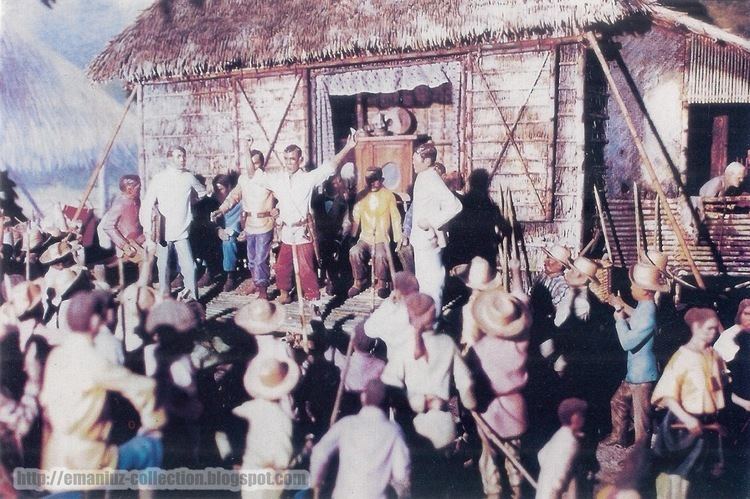
Some of the apparent confusion is in part due to the double meanings of the terms "Balintawak" and "Kalookan" at the turn of the century. Balintawak referred both to a specific place in modern Caloocan and a wider area which included parts of modern Quezon City. Similarly, Kalookan referred to modern Caloocan and also a wider area which included modern Quezon City and part of modern Pasig. Pugad Lawin, Pasong Tamo, Kangkong and other specific places were all in "greater Balintawak", which was in turn part of "greater Caloocan". Ambeth Ocampo has remarked that all of the venues mentioned for the cry are in Caloocan which, at the time, was a district of Balintawak.
Definition of the Cry
The term "Cry" is translated from the Spanish el grito de rebelion (cry of rebellion) or el grito for short. Thus the Grito de Balintawak is comparable to Mexico's Grito de Dolores (1810). However, el grito de rebelion strictly refers to a decision or call to revolt. It does not necessarily connote shouting, unlike the Filipino sigaw.
First skirmish
Up to the late 1920s, the Cry was generally identified with Balintawak. It was commemorated on August 26, considered the anniversary of the first hostile encounter between the Katipuneros and the Guardia Civil. The "first shot" of the Revolution (el primer tiro) was fired at Banlat, Pasong Tamo, then considered a part of Balintawak and now part of Quezon City.
Tearing of cédulas
Not all accounts relate the tearing of cédulas in the last days of August. Of the accounts that do, older ones identify the place where this occurred as Kangkong in Balintawak/Kalookan. Most also give the date of the cédula-tearing as August 26, in close proximity to the first encounter. One Katipunero, Guillermo Masangkay, claimed cédulas were torn more than once – on the 24th as well as the 26th.
For his 1956 book The Revolt of the Masses Teodoro Agoncillo defined "the Cry" as the tearing of cedulas, departing from precedent which had then defined it as the first skirmish of the revolution. His version was based on the later testimonies of Pío Valenzuela and others who claimed the cry took place in Pugad Lawin instead of Balintawak. Valenzuela's version, through Agoncillo's influence, became the basis of the current stance of the Philippine government. In 1963, President Diosdado Macapagal ordered the official commemorations shifted to Pugad Lawin, Quezon City on August 23.
Formation of an insurgent government
An alternative definition of the Cry as the "birth of the Filipino nation state" involves the setting up of a national insurgent government through the Katipunan with Bonifacio as President in Banlat, Pasong Tamo on August 24, 1896 – after the tearing of cedulas but before the first skirmish. This was called the Republika ng Katagalugan (Tagalog Republic).
Other Cries
In 1895 Bonifacio, Masangkay, Emilio Jacinto and other Katipuneros spent Good Friday in the caves of Mt. Pamitinan in Montalban (now part of Rizal province). They wrote "long live Philippine independence" on the cave walls, which some Filipino historians consider the "first cry" (el primer grito).
Commemoration
The Cry is commemorated as National Heroes' Day, a public holiday in the Philippines.
The first annual commemoration of the Cry occurred in Balintawak in 1908 after the American colonial government repealed the Sedition Law. In 1911 a monument to the Cry (a lone Katipunero popularly identified with Bonifacio) was erected at Balintawak; it was later transferred to Vinzons Hall in the University of the Philippines-Diliman, Quezon City. In 1984, the National Historical Institute of the Philippines installed a commemorative plaque in Pugad Lawin.
Historical Debate On The Cry
The dates and events during the Cry of Pugad Lawin are hotly contested among historians. Due to the lack of primary documents and the reliability of sworn witnesses, many of the early events of the Philippine revolution are shrouded in ambiguity.
The National Historical Commission of the Philippines posits that the difference in accounts may be due to the confusion between sources as to what the “Cry” was exactly. There are three interpretations of what the Cry of Pugad Lawin was, but the NHCP considers it the day that the Katipunan decided to formally revolt.
In 1986, the National Historical Institute (NHI) convened to resolve the historical controversy surrounding the Cry. After their meeting on August 14th, 1986, the NHI passed NHI Board Resolution No. 2, series of 1986, where they declared the event officially the “Cry of Pugad Lawin,” having occurred on August 23rd, 1896. The evidence for this decision came from various historical records, as well as the Biak-na-bato constitution.
The Biak-na-Bato constitution is the document drafted and declared by the leaders of the revolutionary government. The document states in its introduction that the revolution started on the 24th of August 1896, placing the date of the cry one day earlier, on August 23rd.
